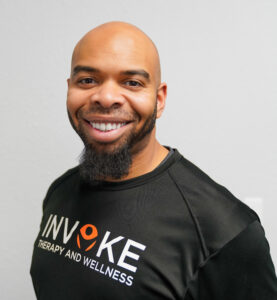
Movement is something we engage in everyday, but it’s no simple task. Each and every movement we engage in requires an intricate choreography of electrochemical signaling, muscular recruitment, balancing agonists and antagonists, and having access to the ROM to complete the task at hand. One of humanity’s greatest strengths is adaptability, and this is true down to the cellular level. When it comes to movement this means that if you give yourself a task or challenge you can consciously or subconsciously change postures, movements, and motor strategies to complete that task. How you get to the goal matters.
Some of these changes are not so subtle, and you know them when you see them. Modifications like limping after rolling an ankle, holding one arm up with the other when you’ve hurt your shoulder, bending over the cart at the grocery store to take the pain/pressure off of your back, etc; these are all understandable changes that can become serious issues if they’re not progressed out of. There are numerous other changes that can be just as impactful, even though they lack such an obvious presentation. Someone might put enough pressure on their instep that their heel never fully contacts the ground to avoid pain from plantar fasciitis or bone spurs. Someone may lean to the opposite side to reach glasses overhead because poor posture limits their ability to reach overhead. Some may sit with all their weight on one cheek to take pressure off their back or sciatic nerves.
All of these things can be understandable in limited situations and for limited durations. But when these changes are persistent long term disfunction or worse can be the result. Repeated poor vs good mechanics at the shoulder can have the same effect as constantly dragging a rope (biceps tendon) over the edge of a concrete block (shoulder blade) or around a pulley (in its groove). Over that rough edge it will eventually fray, and your body will have to adapt, or it can lead to a tear. Constant weight on one side of the body can lead to sheering stresses placed on the joints above them and the ones above those (stand on one leg and lean to that same side to feel this from the ankle to the low back). Beyond that, use it or lose it is real when it comes to any muscle group. Whether you’re nursing a limp for weeks or avoiding using that arm that hurts unless you absolutely have to you will experience atrophy of the muscle and its efficient connection to the brain.
As is the case with most things in this realm movement is medicine, the catch is you have to move the right way. Even obvious fixes like getting rid of the limp may only be addressing a symptom and not the root cause. This is where it benefits you to have a professional take a look and put you on the right track. Though movement is complex as I mentioned earlier, you can still break it down to three major components: mobility, stability, and neuromuscular control. Mobility reflects the ability of the joint or tissues to go through their expected ROM; both too much or too little can cause problems. Stability is building a solid platform from which to perform your mobility tasks. If you build from a weak foundation disaster is always in the cards. Lastly is neuromuscular control. This is how well you brain can communicate with your muscles to complete the tasks. Just lime mobility too much is bad (spasm) too little (foot asleep, can’t flex glutes) is bad in a whole different way.
This is why you need to have a movement specialist assess you. Come to Invoke therapy and receive the most detailed analysis on your gross and fine movement patterns. We can work together and utilize that data to maximize your athletic potential, and minimize you risk for future acute or chronic injury.

